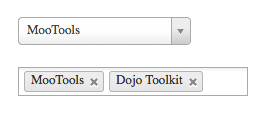Prepend and Append Files with .htaccess
One of the lessor known and used capabilities of .htaccess files is the ability to prepend and append includes to every page request. Doing so avoids needing to code <?php require('footer.php'); ?> in every template file you wat to use them in. Here's the .htaccess code:
# Prepend the file
php_value auto_prepend_file "/dir/path/utilities.php"
# Append file to bottom of page
php_value auto_append_file "/dir/path/templates/footer.php"
Now don't mistake this post as me telling you to use this strategy; using this functionality creates a layer of indirection that could confuse a team of developers if they don't all have a grasp of where automatically included files are coming from. Just wanted to let you know this was possible!
![7 Essential JavaScript Functions]()
I remember the early days of JavaScript where you needed a simple function for just about everything because the browser vendors implemented features differently, and not just edge features, basic features, like addEventListener and attachEvent. Times have changed but there are still a few functions each developer should...
![Camera and Video Control with HTML5]()
Client-side APIs on mobile and desktop devices are quickly providing the same APIs. Of course our mobile devices got access to some of these APIs first, but those APIs are slowly making their way to the desktop. One of those APIs is the getUserMedia API...
![MooTools Accordion: Mouseover Style]()
Everyone loves the MooTools Accordion plugin but I get a lot of requests from readers asking me how to make each accordion item open when the user hovers over the item instead of making the user click. You have two options: hack the original plugin...
![jQuery Chosen Plugin]()
Without a doubt, my least favorite form element is the SELECT element. The element is almost unstylable, looks different across platforms, has had inconsistent value access, and disaster that is the result of multiple=true is, well, a disaster. Needless to say, whenever a developer goes...





this strategy is often used to hook a profiler into an existing app, which works great in DEV environments
see e.g. http://xhprof.io/
I can see it now, the /html directory full of code snippets, and an incredibly convoluted htaccess file that conditionally assembles the various pages for a site. :)
Quick! Turn it into a framework!
I’ve used to use this technique, but dropped it for a while now.
It appears very useful at first but can be dangerous actually…
One of its weakness is the impossibility to “un” prepend or “un” append according to directory or filematch directives.
How can i use the .httaccess pre-append a .php file? i have tried using—– php_value auto_prepend_file “inc.php”
Am getting this error: Fatal error: Unknown: Failed opening required ‘inc.php” (include_path=’.;D:\xampp\php\PEAR’) in Unknown on line 0
@Matthew
have you tried using full path like /var/www/site/dir/file.php?
.htaccess – is a single file for all project. And I think it’s a bad practice to prepend files, because they will prepend on all pages.
I find it hard to believe @ Pluto htaccess allows if statements.
Thanks Chris, this would be a great way to append a “copyright link” that can’t easily be found.